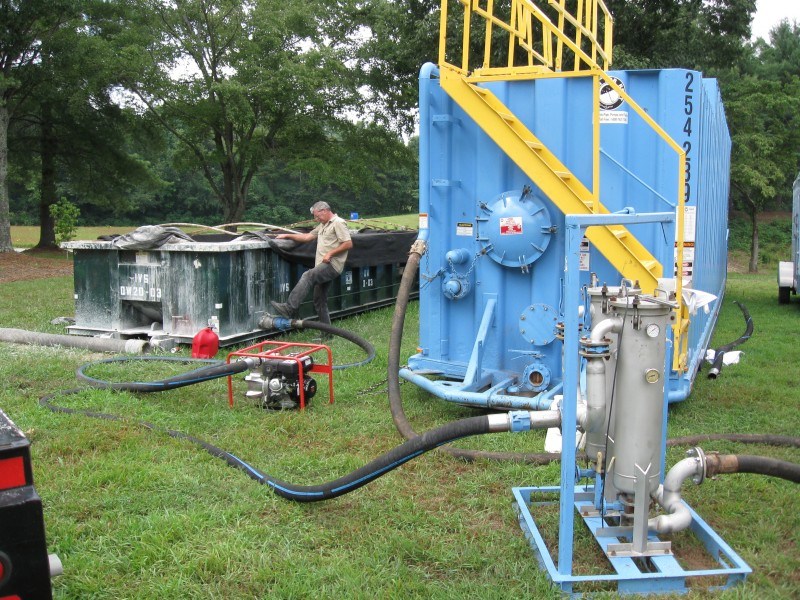November 13, 2014

S&ME is pleased to be recognized with an ACEC North Carolina Honors Award for recent work on North Carolina Department of Transportation (NCDOT) Land Application of Concrete Byproducts performed by Rob Wilcox in our Greensboro office. The North Carolina Department of Transportation (NCDOT) working with engineering firm S&ME developed an environmentally sustainable approach to managing concrete byproducts from hydrodemolition and diamond grinding operations prevalent in bridge maintenance and concrete roadway projects. In the past, the industrial wastewater generated from the processes was disposed at wastewater treatment facilities and the solids sent to landfills, at a substantial cost to NCDOT. Working in collaboration, NCDOT and S&ME developed a program to permit and beneficially reuse these byproducts through land application of hydrodemolition runoff water (HRW) and diamond grinding slurries (DGS) onto NCDOT properties and private farmland.
Land application of the concrete residuals requires a permit. The North Carolina Department of Environment and Natural Resources (NCDENR) did not have a specific permitting process for land application of HRW and DGS and so tailored the Residuals Management permit process to meet the need. To acquire the NCDENR permit, NCDOT and S&ME coordinated research studies performed by North Carolina State University to evaluate soil pH reactions and determine liming values of HRW and DGS, demonstrating that land application is beneficial.
The benefits from the land application of concrete byproducts are substantial. For the farmers, the residuals are used to adjust soil pH, thus saving the more traditional application of costly lime to achieve the same amended soil. The soil pH adjustment helps prevent leaching of nutrients and the potential for agricultural runoff, thus protecting surface water and groundwater resources. NCDOT realized immediate cost savings through elimination of costly wastewater treatment and landfill disposal charges. Those cost savings can be applied to other transportation uses.

